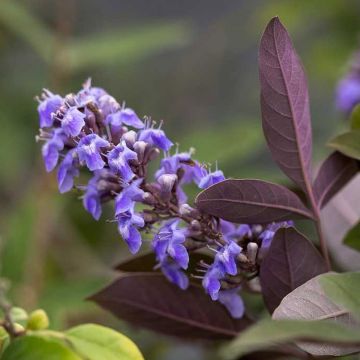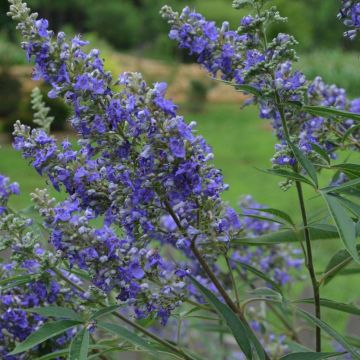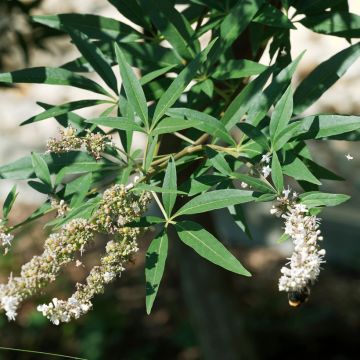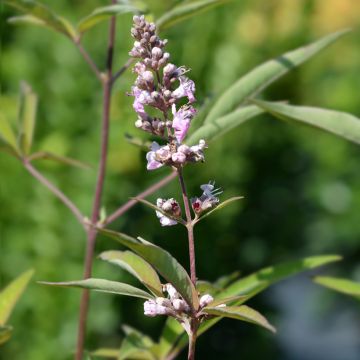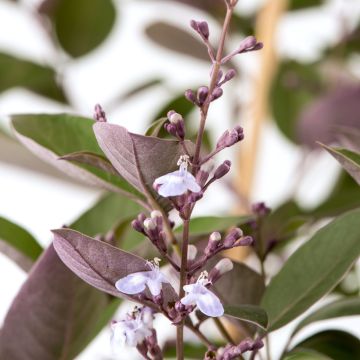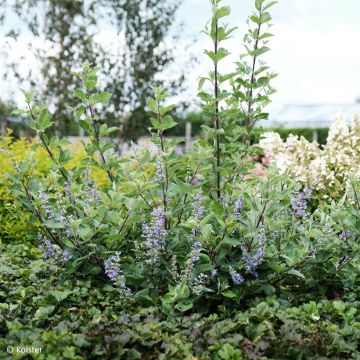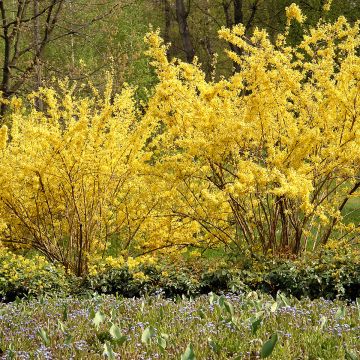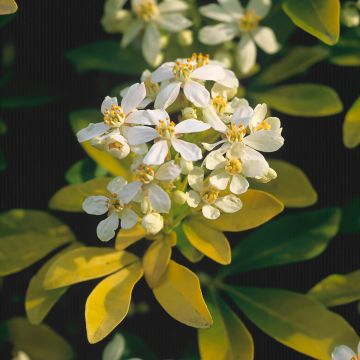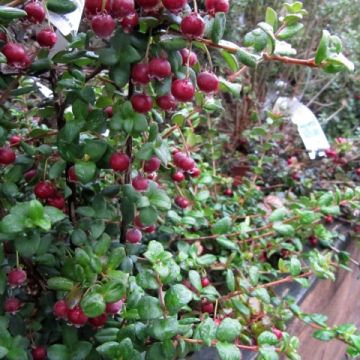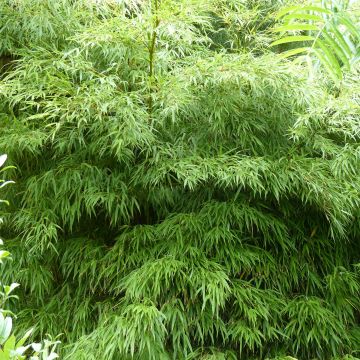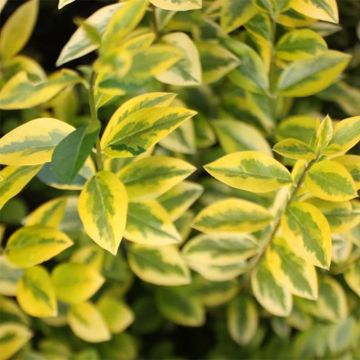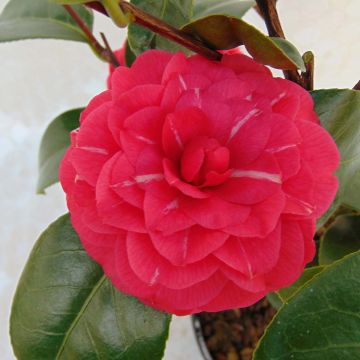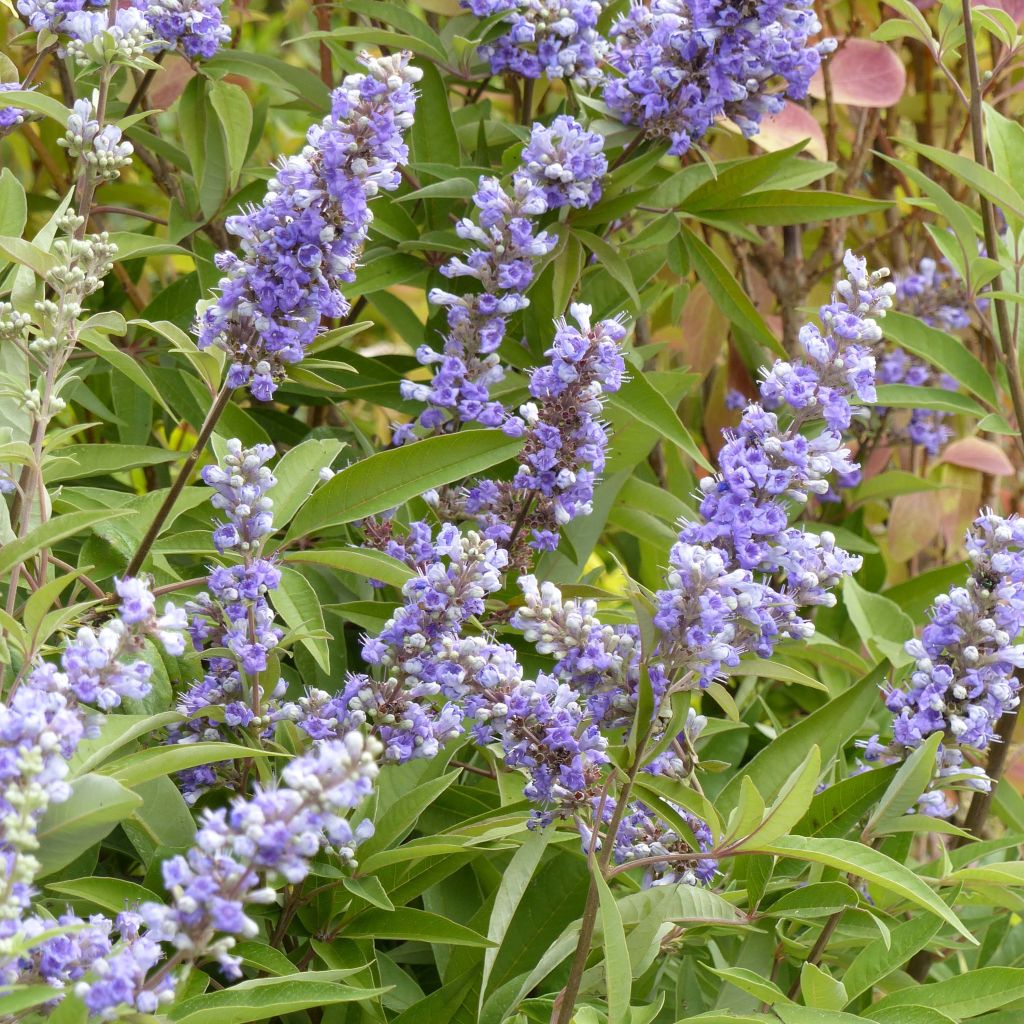

Vitex agnus-castus f. latifolia - Chaste Tree


Vitex agnus-castus f. latifolia - Chaste Tree


Vitex agnus-castus f. latifolia - Chaste Tree
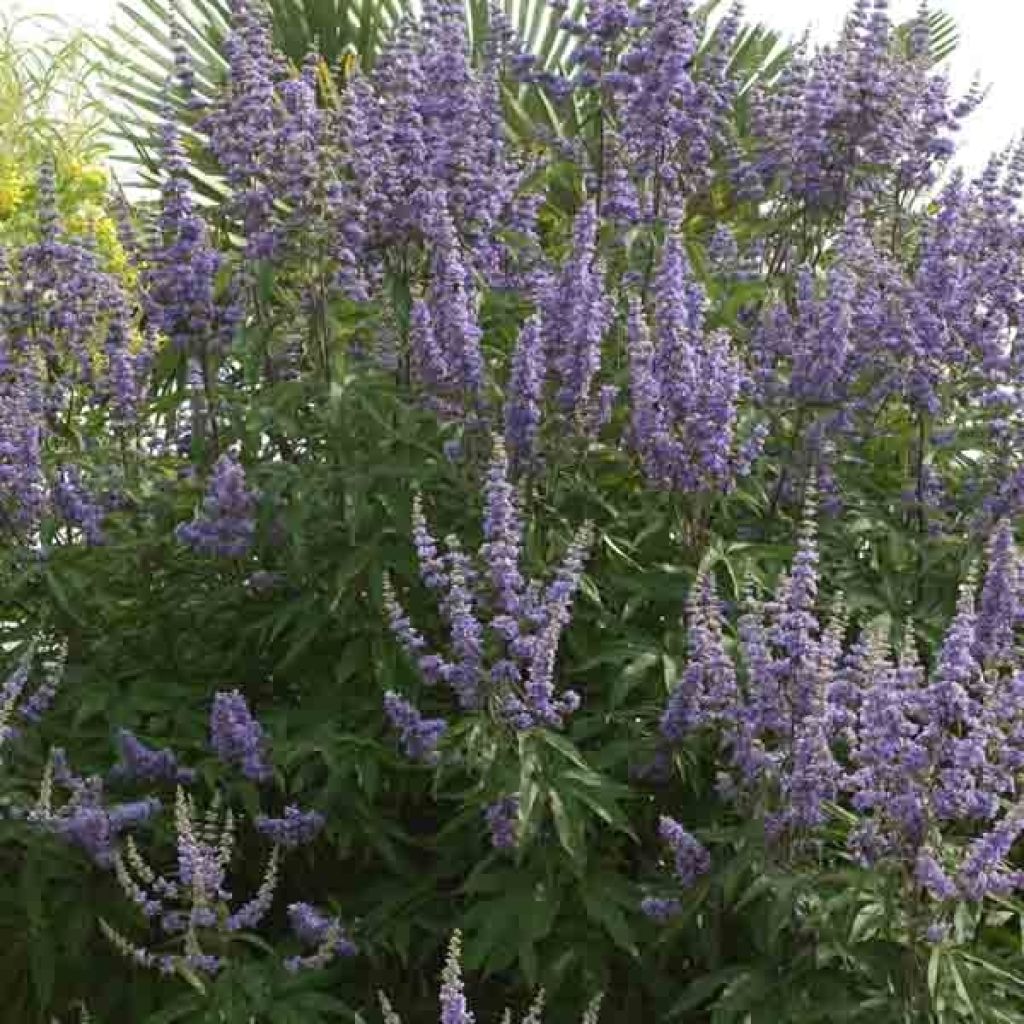

Vitex agnus-castus f. latifolia - Chaste Tree
Vitex agnus-castus f. latifolia - Chaste Tree
Vitex agnus-castus Latifolia
Broad-leaved Chaste Tree, Monk's Pepper, Chasteberry, Chaste Lamb
The plants arrived in good condition. We repotted them and they seem to be doing well. We're looking forward to next spring for what might be their first flowering.
Nadine, 20/09/2025
Special offer!
Receive a €20 voucher for any order over €90 (excluding delivery costs, credit notes, and plastic-free options)!
1- Add your favorite plants to your cart.
2- Once you have reached €90, confirm your order (you can even choose the delivery date!).
3- As soon as your order is shipped, you will receive an email containing your voucher code, valid for 3 months (90 days).
Your voucher is unique and can only be used once, for any order with a minimum value of €20, excluding delivery costs.
Can be combined with other current offers, non-divisible and non-refundable.
Home or relay delivery (depending on size and destination)
Schedule delivery date,
and select date in basket
This plant carries a 24 months recovery warranty
More information
We guarantee the quality of our plants for a full growing cycle, and will replace at our expense any plant that fails to recover under normal climatic and planting conditions.

Would this plant suit my garden?
Set up your Plantfit profile →
Description
Vitex agnus-castus f. latifolia distinguishes itself from the usual Mediterranean Chaste Tree by its increased vigour, better hardiness, broader leaves, and more pronounced bluish-purple flowering. It is a rounded and bushy bush, with branches that stand beautifully to carry numerous flowers in paniculate inflorescences, somewhat resembling those of buddleias. The entire plant emits an aromatic pepper scent, which has earned it the nickname "Pepper Tree". Not demanding, tolerant of salty soils, and resistant to drought once well established, easy to grow, it is an excellent hedging bush.
Vitex agnus-castus f. latifolia belongs to the verbena family. Its wild ancestor is native to the Mediterranean basin and Asia Minor, where it is frequently found by the seaside, planted in sand and directly exposed to sea sprays. This latifolia variety forms a generally rounded, quite bushy bush in a few years. When mature, it will measure approximately 2.75m (9ft) in all directions, sometimes up to 3m (9ft 10in) in height in rich and moist soil. Its flowering occurs from July to late September, depending on the climate, on the current year's shoots. It takes the form of relatively thin, erect floral spikes reaching 20-30cm (7.9-11.8in) in length, adorned with small bluish-purple honey-scented flowers. Then, small fruits, the size of peppercorns, aromatic, dark red, and shiny, persist until winter. The fast-growing stems are sturdy and very flexible. They bear palmate leaves, divided into 5 to 7 broad lobes, and their colour is a beautiful semi-glossy bright green, with a more silvery underside. This deciduous foliage turns yellow in autumn before falling. It emits a strong pepper scent when touched or crushed. Vitex develop a very deep root system, allowing them to draw moisture from deep down when summer is dry.
Often planted by the seaside, Vitex agnus-castus f. latifolia is highly resistant to sea sprays and summer drought once well rooted. It is an excellent plant for coastal gardens or Mediterranean gardens. Its cold hardiness (down to -20°C) makes it suitable for a wide range of gardens, natural or without irrigation. It can be integrated into an informal hedge or grove, in the company of rose bay (in mild climates), botanical roses, Crepe Myrtle, buddleias, or even summer tamarisks, for example.
Report an error about the product description
Vitex agnus-castus f. latifolia - Chaste Tree in pictures


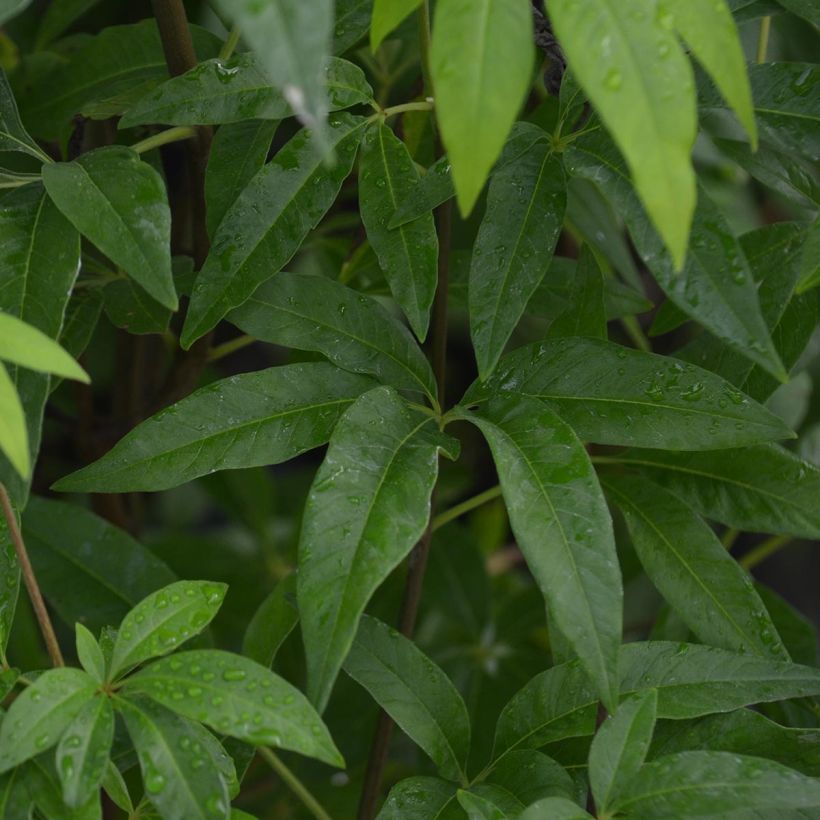

Plant habit
Flowering
Foliage
Botanical data
Vitex
agnus-castus
Latifolia
Verbenaceae
Broad-leaved Chaste Tree, Monk's Pepper, Chasteberry, Chaste Lamb
Cultivar or hybrid
Other Vitex - Chaste tree
View all →Planting and care
Plant Vitex latifolia in a sunny position in well-drained, rather deep soil. This bush is not demanding on the nature of the soil, whether it is limestone, neutral, or slightly acidic. It resists sea spray and brackish water very well. Shelter it from cold and drying winds and water in case of prolonged drought during the first few years. Fully hardy in the southern half of France, it still fears very strong frosts, especially if the soil it is planted in is poorly drained or if it does not thaw for several consecutive days. Its young shoots can be destroyed by late frosts. Once well rooted, it requires no watering in summer in all regions.
Planting period
Intended location
Care
-
, onOrder confirmed
Reply from on Promesse de fleurs
Similar products
Haven't found what you were looking for?
Hardiness is the lowest winter temperature a plant can endure without suffering serious damage or even dying. However, hardiness is affected by location (a sheltered area, such as a patio), protection (winter cover) and soil type (hardiness is improved by well-drained soil).

Photo Sharing Terms & Conditions
In order to encourage gardeners to interact and share their experiences, Promesse de fleurs offers various media enabling content to be uploaded onto its Site - in particular via the ‘Photo sharing’ module.
The User agrees to refrain from:
- Posting any content that is illegal, prejudicial, insulting, racist, inciteful to hatred, revisionist, contrary to public decency, that infringes on privacy or on the privacy rights of third parties, in particular the publicity rights of persons and goods, intellectual property rights, or the right to privacy.
- Submitting content on behalf of a third party;
- Impersonate the identity of a third party and/or publish any personal information about a third party;
In general, the User undertakes to refrain from any unethical behaviour.
All Content (in particular text, comments, files, images, photos, videos, creative works, etc.), which may be subject to property or intellectual property rights, image or other private rights, shall remain the property of the User, subject to the limited rights granted by the terms of the licence granted by Promesse de fleurs as stated below. Users are at liberty to publish or not to publish such Content on the Site, notably via the ‘Photo Sharing’ facility, and accept that this Content shall be made public and freely accessible, notably on the Internet.
Users further acknowledge, undertake to have ,and guarantee that they hold all necessary rights and permissions to publish such material on the Site, in particular with regard to the legislation in force pertaining to any privacy, property, intellectual property, image, or contractual rights, or rights of any other nature. By publishing such Content on the Site, Users acknowledge accepting full liability as publishers of the Content within the meaning of the law, and grant Promesse de fleurs, free of charge, an inclusive, worldwide licence for the said Content for the entire duration of its publication, including all reproduction, representation, up/downloading, displaying, performing, transmission, and storage rights.
Users also grant permission for their name to be linked to the Content and accept that this link may not always be made available.
By engaging in posting material, Users consent to their Content becoming automatically accessible on the Internet, in particular on other sites and/or blogs and/or web pages of the Promesse de fleurs site, including in particular social pages and the Promesse de fleurs catalogue.
Users may secure the removal of entrusted content free of charge by issuing a simple request via our contact form.
The flowering period indicated on our website applies to countries and regions located in USDA zone 8 (France, the United Kingdom, Ireland, the Netherlands, etc.)
It will vary according to where you live:
- In zones 9 to 10 (Italy, Spain, Greece, etc.), flowering will occur about 2 to 4 weeks earlier.
- In zones 6 to 7 (Germany, Poland, Slovenia, and lower mountainous regions), flowering will be delayed by 2 to 3 weeks.
- In zone 5 (Central Europe, Scandinavia), blooming will be delayed by 3 to 5 weeks.
In temperate climates, pruning of spring-flowering shrubs (forsythia, spireas, etc.) should be done just after flowering.
Pruning of summer-flowering shrubs (Indian Lilac, Perovskia, etc.) can be done in winter or spring.
In cold regions as well as with frost-sensitive plants, avoid pruning too early when severe frosts may still occur.
The planting period indicated on our website applies to countries and regions located in USDA zone 8 (France, United Kingdom, Ireland, Netherlands).
It will vary according to where you live:
- In Mediterranean zones (Marseille, Madrid, Milan, etc.), autumn and winter are the best planting periods.
- In continental zones (Strasbourg, Munich, Vienna, etc.), delay planting by 2 to 3 weeks in spring and bring it forward by 2 to 4 weeks in autumn.
- In mountainous regions (the Alps, Pyrenees, Carpathians, etc.), it is best to plant in late spring (May-June) or late summer (August-September).
The harvesting period indicated on our website applies to countries and regions in USDA zone 8 (France, England, Ireland, the Netherlands).
In colder areas (Scandinavia, Poland, Austria...) fruit and vegetable harvests are likely to be delayed by 3-4 weeks.
In warmer areas (Italy, Spain, Greece, etc.), harvesting will probably take place earlier, depending on weather conditions.
The sowing periods indicated on our website apply to countries and regions within USDA Zone 8 (France, UK, Ireland, Netherlands).
In colder areas (Scandinavia, Poland, Austria...), delay any outdoor sowing by 3-4 weeks, or sow under glass.
In warmer climes (Italy, Spain, Greece, etc.), bring outdoor sowing forward by a few weeks.






























